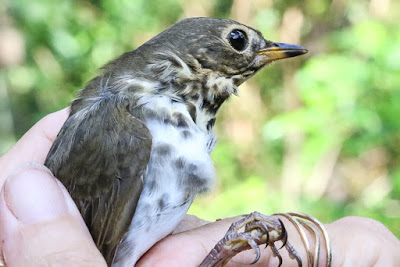At Possum Long we banded three birds. A Black-throated Blue Warbler, a Red-eyed and a White-eyed Vireo. Those birds made it a good day. We also saw the Scissor-tailed Flycatcher again and were very surprised it was still present. Happiness all around.
Black-throated Blue Warbler
Photo by Pete Grannis (welcome back!)
Red-eyed Vireo
Photo by Pete Grannis
White-eyed Vireo
On Saturday, we returned to PB 46. We banded a total of 9 Painted Buntings and had a recapture from a previous season. These recaptures are giving us very good longevity and site fidelity data.
Painted Bunting
Photo by Bill LaFramboise
For incidental captures there we were surprised to have a Magnolia Warbler. There have been more of this species captured this season than any other. We also had a Blue-gray Gnatcatcher and a Blue Jay.
Magnolia Warbler
Photo by Bill LaFramboise
Blue-gray Gnatcatcher
Photo by Bill LaFramboise
On Sunday we returned to PB 61. We banded a total of 11 Painted Buntings and recaptured 3. All three had been banded in March, 2016. This means that they had flown up to their breeding places and back two times since being banded!
Painted Bunting
Photo by Bill LaFramboise
Incidental captures gave us another Blue-gray Gnatcatcher. This is one of the smallest birds we band. They weigh just over the weight of a nickel. We also banded a Cape May Warbler. Third for this season and only the fourth ever! Note gray cheek with pale area under it.
Cape May Warbler
Photo by Bill LaFramboise
Our season total of Painted Buntings now stands at 32.
Next banding session is Tuesday, October 31. Nets open at 7:30.






















































